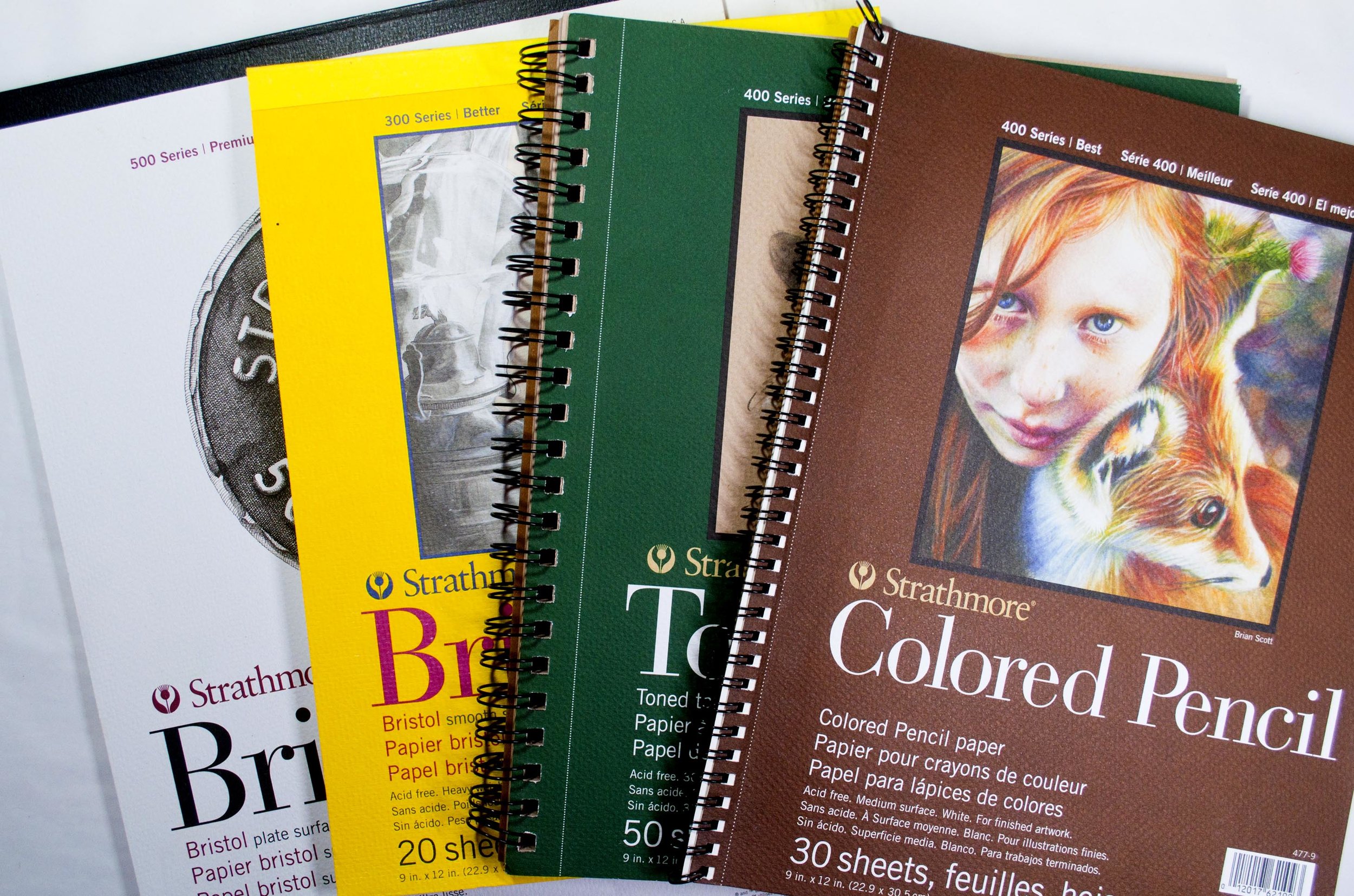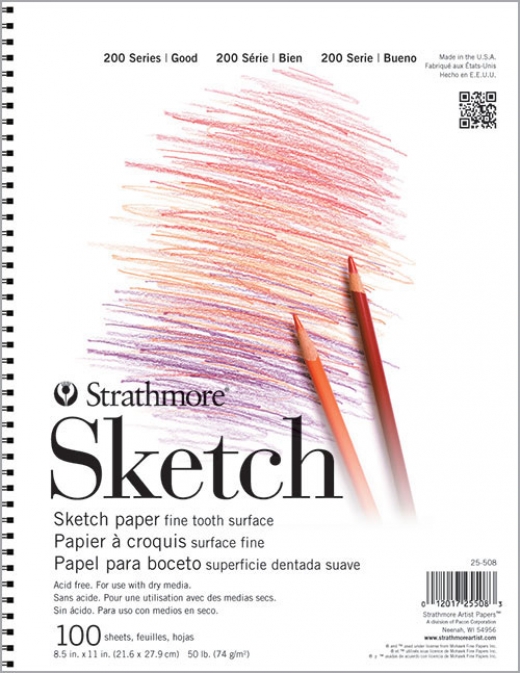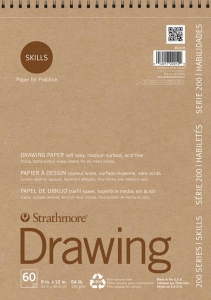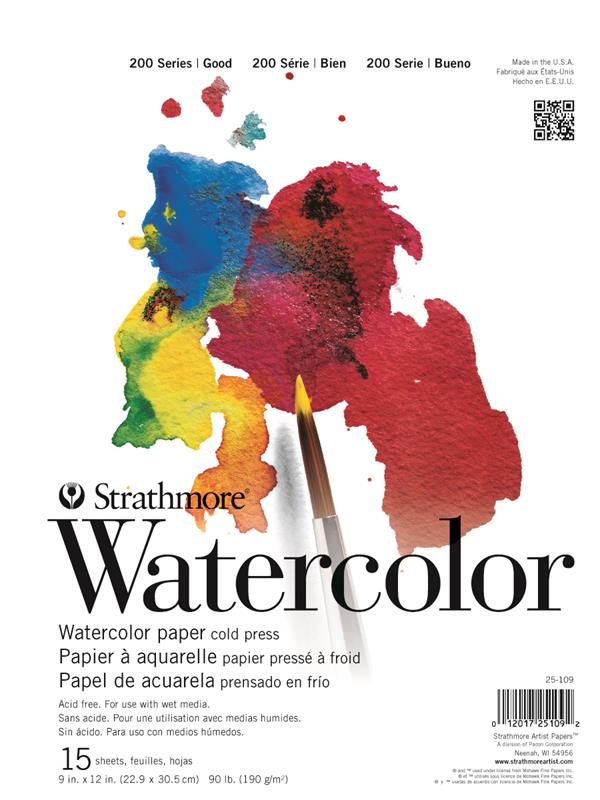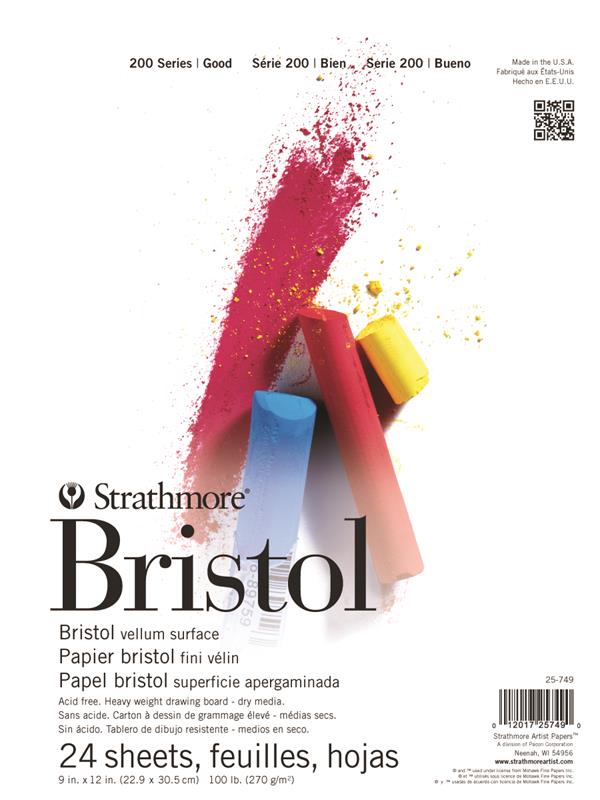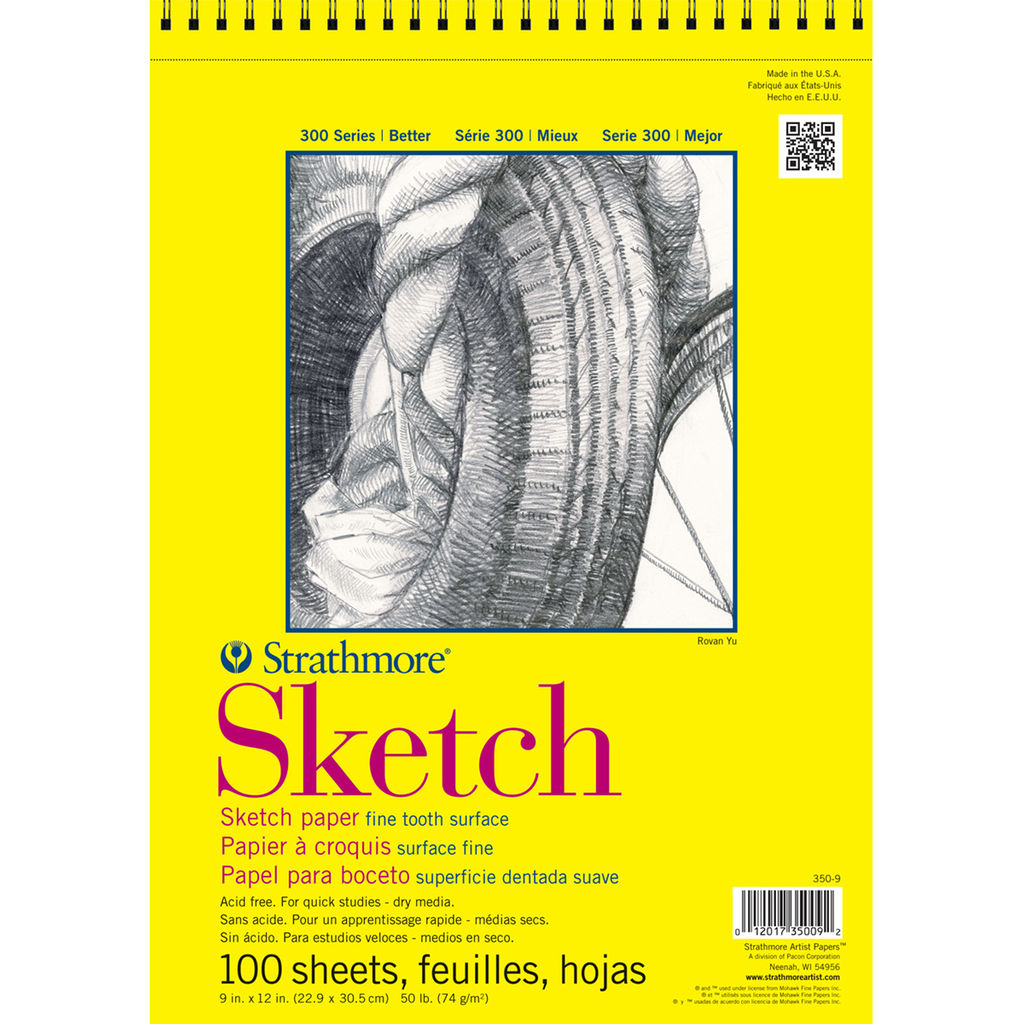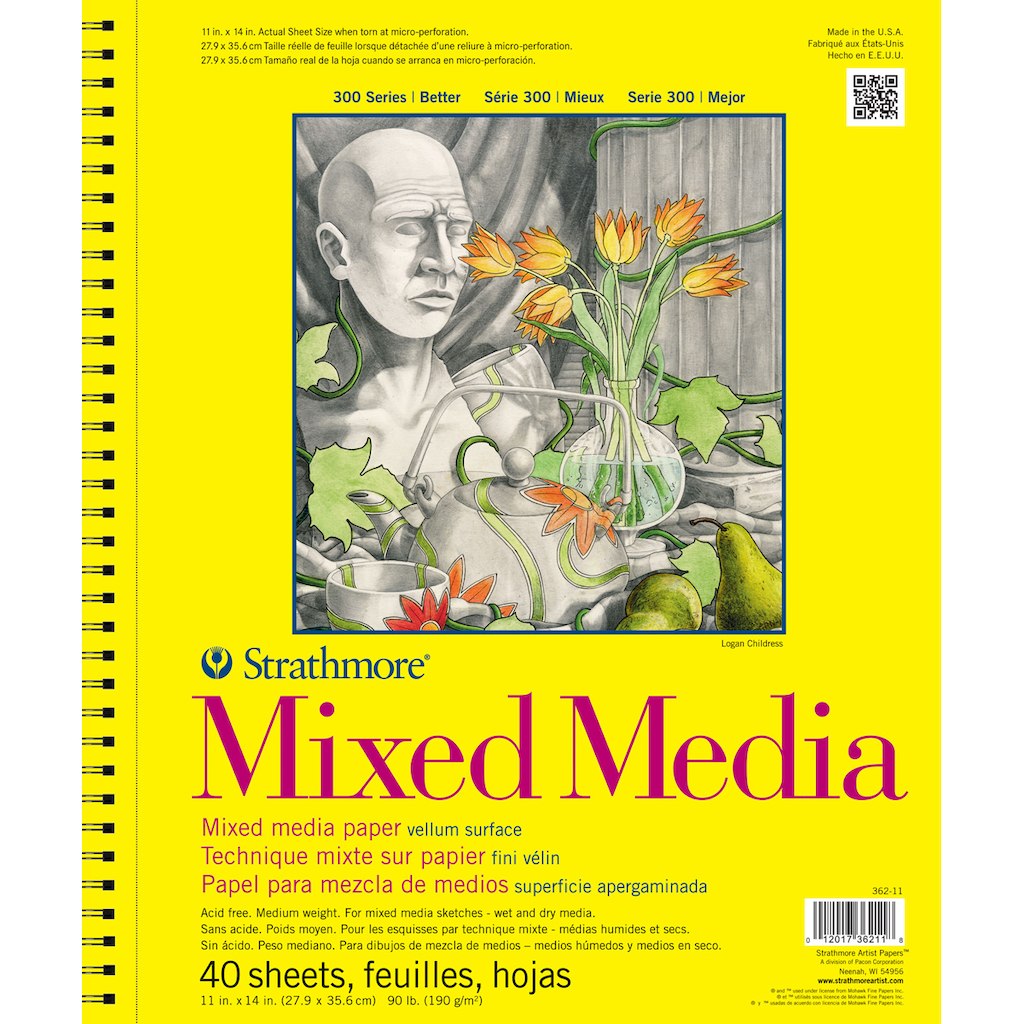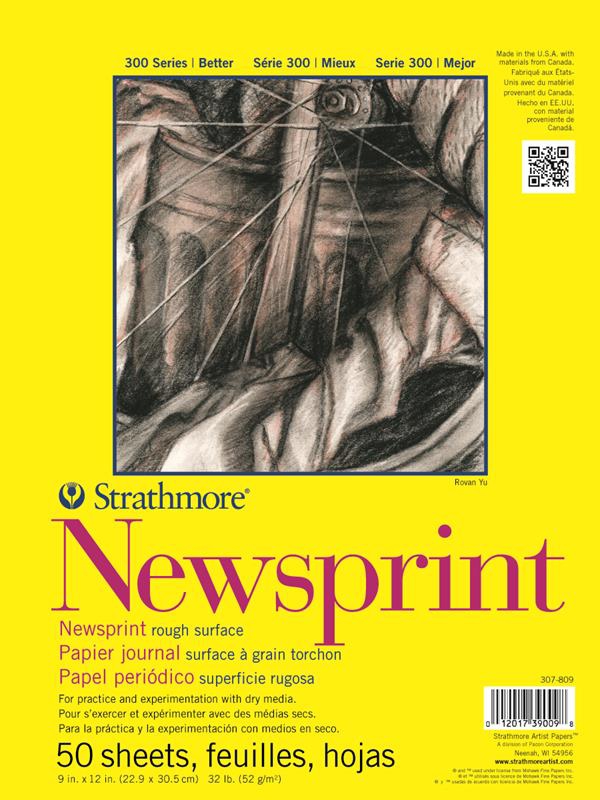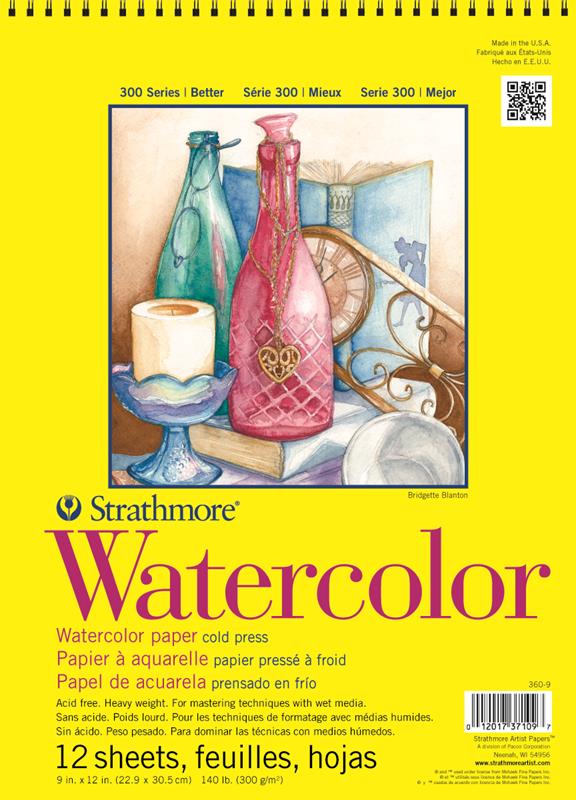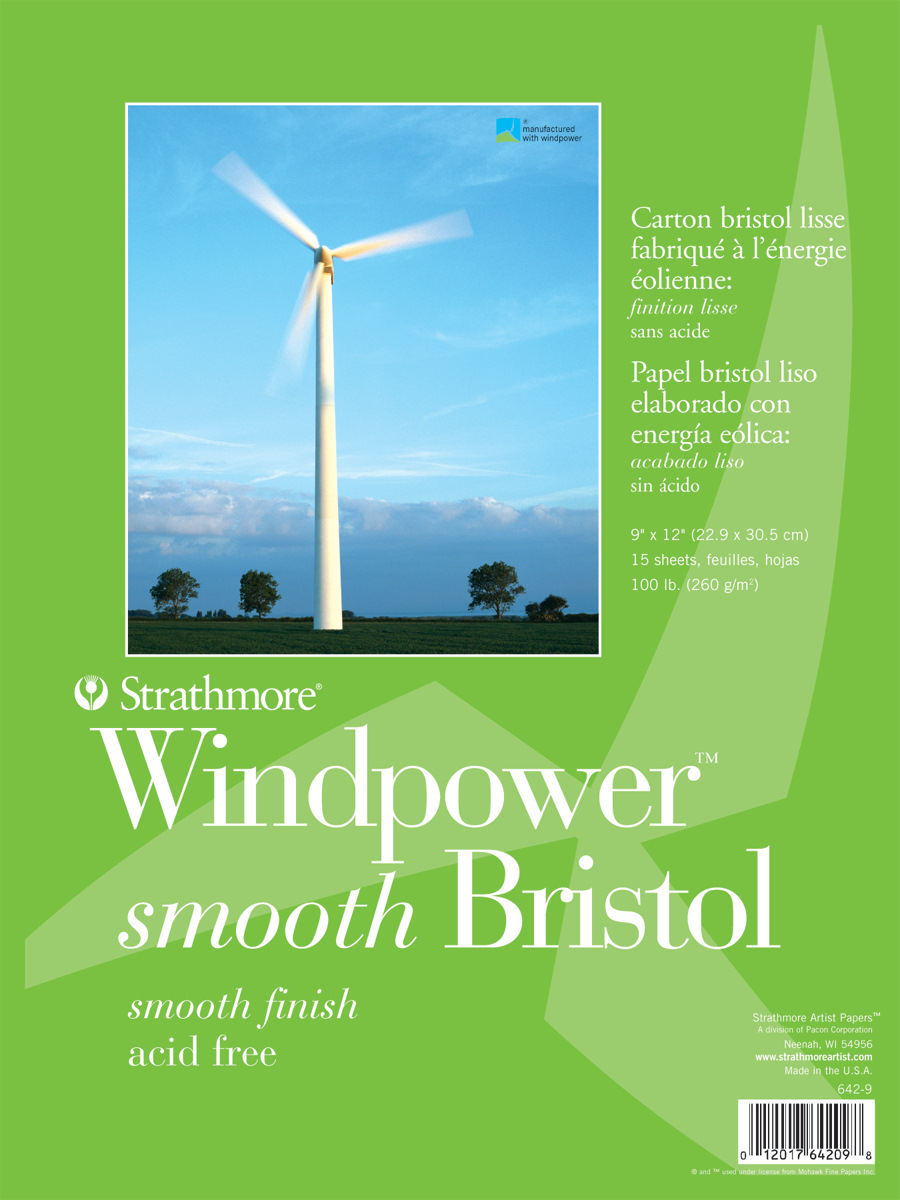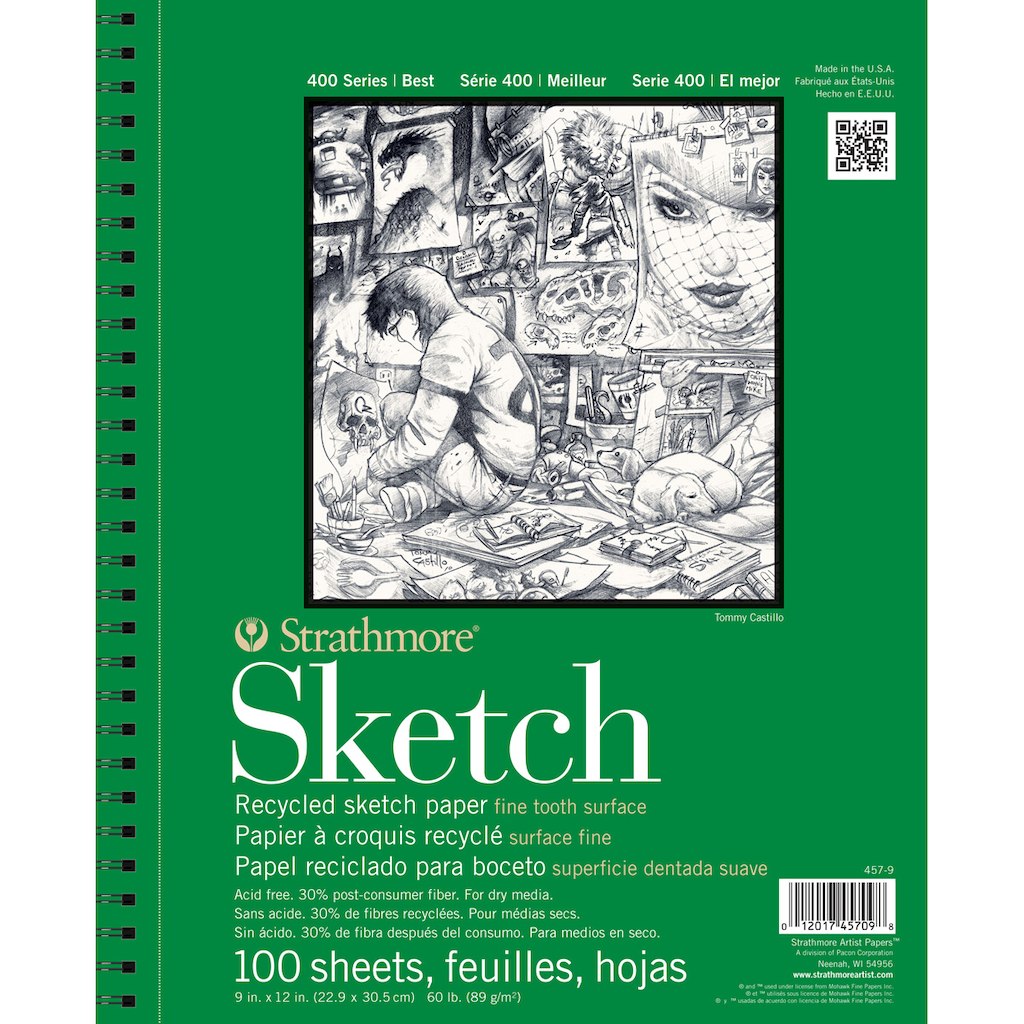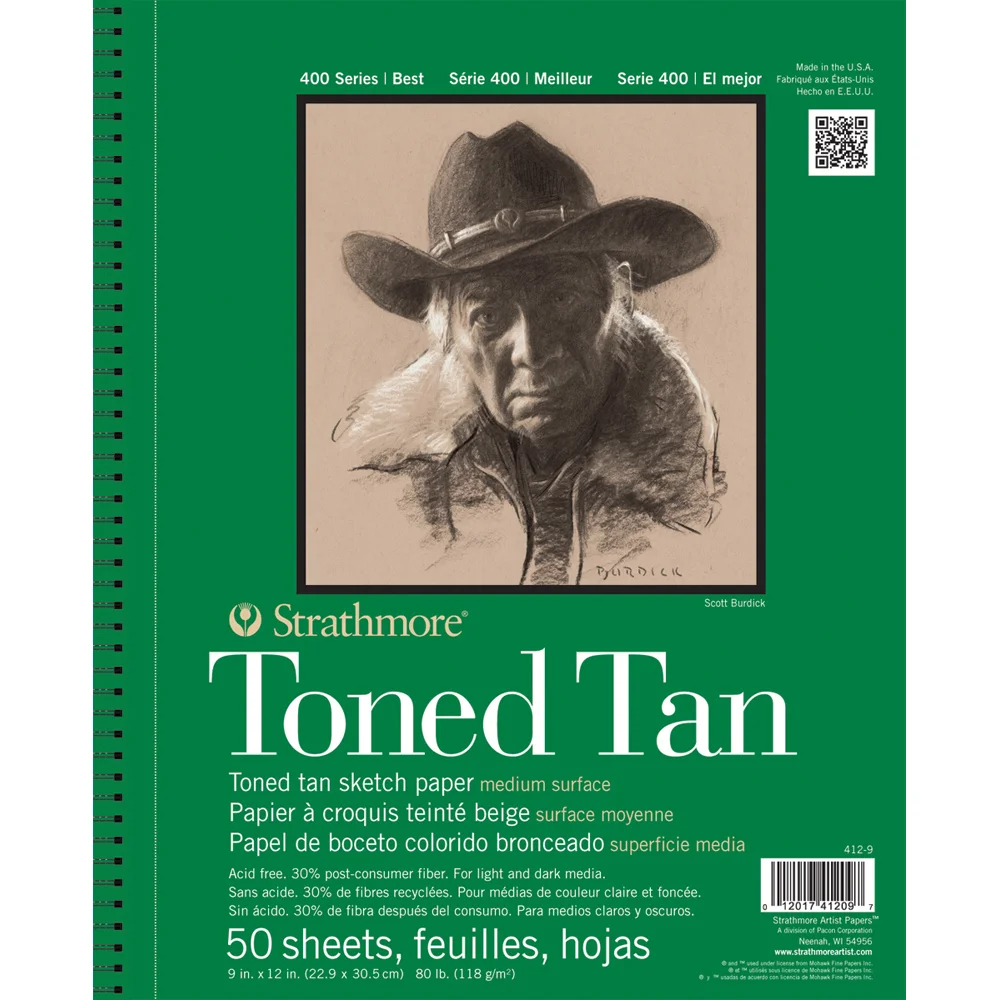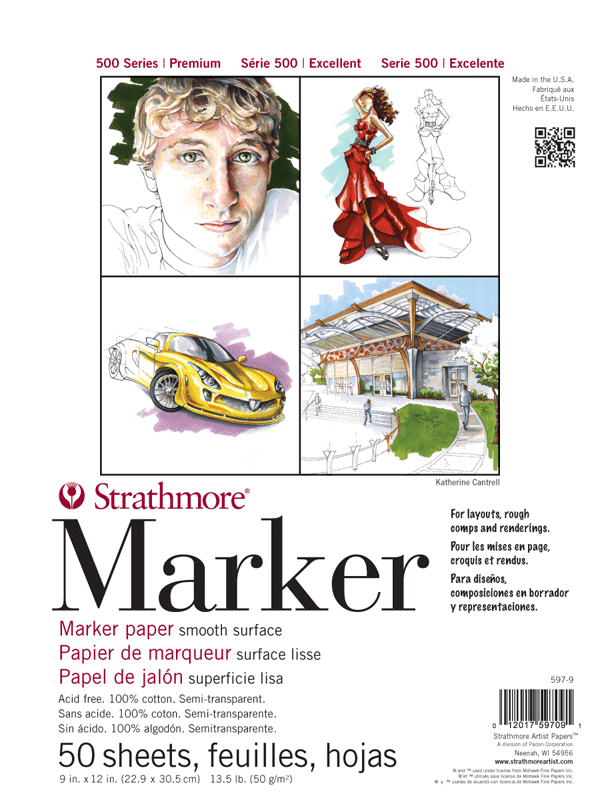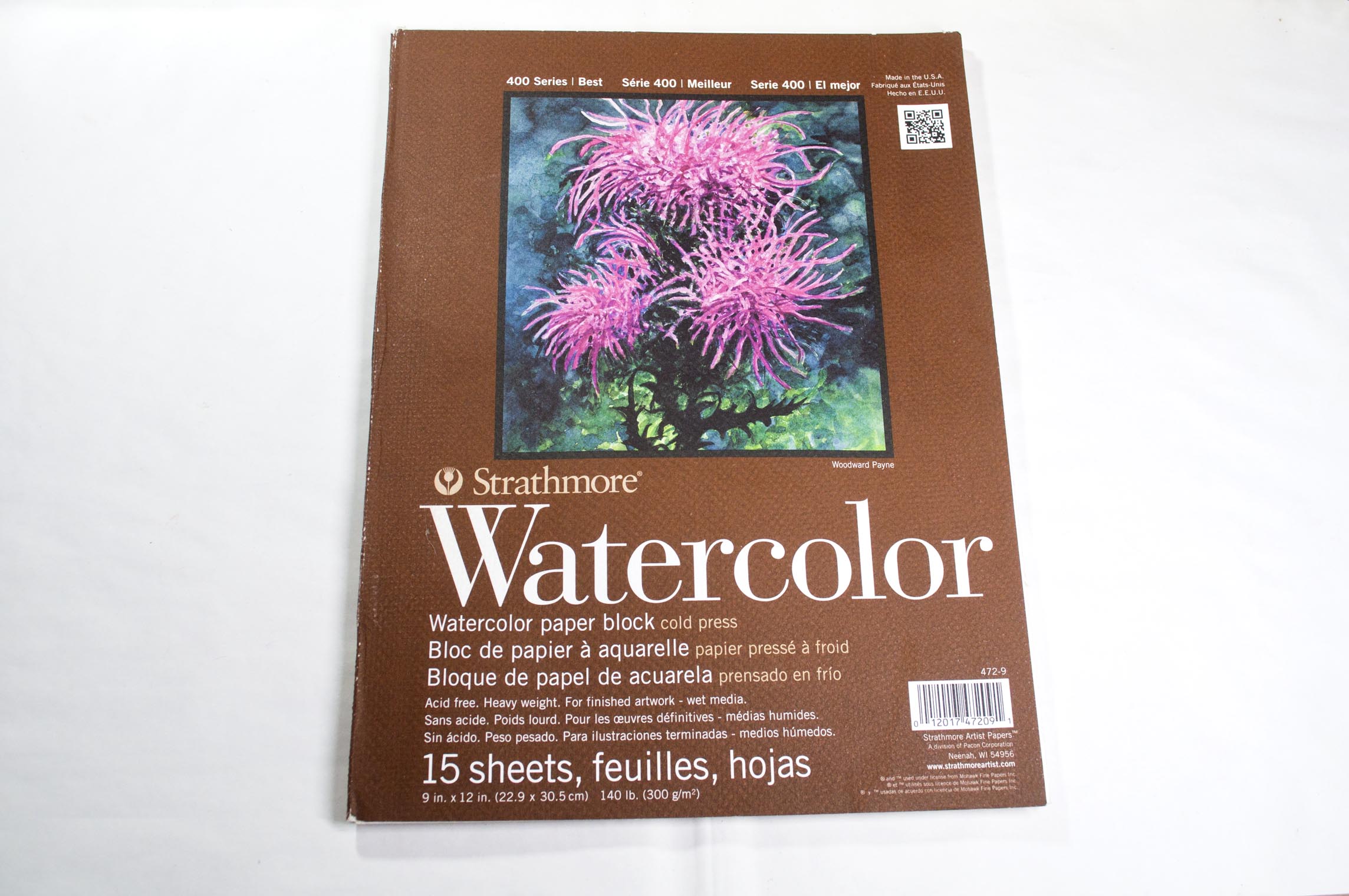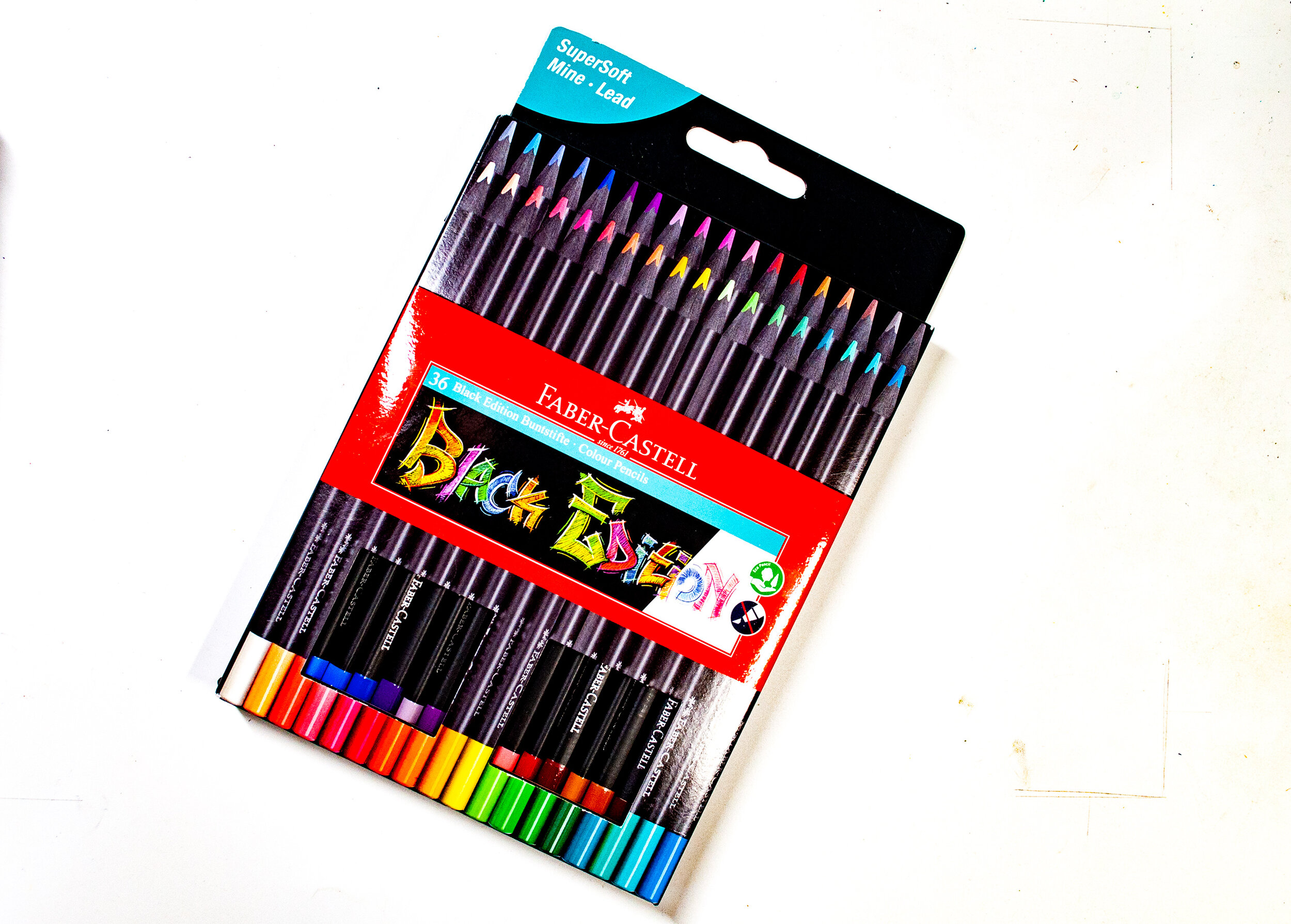Strathmore Paper
Strathmore Paper
Without a doubt, once you find the medium you want to work with, the next most important ingredient to creating beautiful art is the paper, the surface in which to lay your wonderful creation. I have wanted to do this review for quite some time now, however I think this will be my most difficult review to portray to my viewers, but I am always up for a challenge.
There is of course so many other paper manufactures on the market and I have tried a lot, but obviously not them all. Thus far, my favourite paper is by far Strathmore, not just because of the quality of the paper, but the fantastic range they provide. Strathmore create paper for every occasion and each type of paper is produced in different grades of quality. However, before I explain the grades and types of paper, I have to say that even the lowest grade paper Strathmore produce is beautiful to work on.
Strathmore Grades
Strathmore have four different grades for their paper and they are really simple to distinguish from one an other once you know the grades.
200 Series
Strathmore's 200 Series paper is their lowest graded paper, but as I mentioned earlier, being Strathmore's lowest grade paper does not actually mean it is a low grade paper, if that makes sense. The pads in the 200 Series normally come in white covers with vividly colored art work on the cover, or their are a few brown colored covers in the 200 Series Skills.
Perhaps as you might expect, the Strathmore 200 Series paper is among the cheapest paper in the Strathmore range. Above in the image, you can see the style of covers that help to identify 200 Series paper, to find out more about each one, simply click on the image.
300 Series
The Strathmore 300 Series is the next grade up, this is the grade that I first started out on with Strathmore paper and in particular the Bristol Velum and Smooth surfaces, but more of the paper types later. The 300 Series is excellent paper capable of producing beautiful art surfaces.
According to Strathmore, their take on the 300 Series is as follows
Better quality paper designed for quick studies and the practice of techniques with any media, as well as final artwork by beginning or student artists.
400 Series
Strathmore's 400 Series in my opinion is what a lot of high quality papers are equal to, this 400 Series paper is simply a delight to work on. Within the 400 Series there are three sub-categories of paper, there is the regular brown front pads, then there is those with green front covers which are completely recycled paper. Strathmore have made huge strives with regards to the environment and their Windpower Series within the 400 Series perhaps best demonstrates this.
The Windpower Series is exactly the same high quality as the 400 series and recycled 400 series, this is how Strathmore explain their Windpower series.
Windpower paper products are certified through the Green-e Marketplace Program administered by the non-profit Center for Resource Solutions based in San Francisco, CA. The Green-e logo is an assurance that we purchase Certified Renewable Energy. In addition, these papers are manufactured at a paper mill that purchases 100% Wind Renewable Energy Certificate Products toward the production of these papers.
So for those of us concerned about the environment and the damage we as humans are causing, when you purchase this paper, not only are you putting back into this amazing process Strathmore have established, but you are still working with the finest paper about.
500 Series
The Strathmore 500 Series paper is the most excellent paper I have tried to date, the 500 Series is the Rolls Royce of paper in my opinion, at least among all the papers I have tried.
My own personal favourite paper is the Strathmore 500 Series Bristol Plate, whilst this is a smooth surface paper, I find it perfect for marker and colored pencil art combined, but even colored pencil art on its own. Strathmore describe their 500 Series as follows.
Premium quality, professional grade fine art papers. All Papers are archival, acid free and manufactured with cotton fiber for enhanced surface durability and exceptional results. Perfect for professional artists.
Strathmore Types Of Paper
Throughout all of the grades, the same type of paper can be found and so this is a simple run down of the paper types you can expect to find within the Strathmore family.
Bristol
Bristol board as it is called, is perhaps one of the most versatile and popular papers, not just in the Strathmore line, but throughout all the paper lines. Bristol comes in a few different forms, Smooth is pretty self explanatory, this paper is perfect for marker art, mixed media and coloured pencil. Bristol Velum has slightly more tooth on the surface, but is still quite a smooth surface considering. Then there is Bristol Plate and this is an incredibly smooth surface. With the Bristol range it is measured in Ply, which basically means thickness of the paper, more along the lines of cardboard.
Watercolor
Watercolor paper is such an important paper for watercolor artists, Strathmore provide excellent quality in this type of paper and all throughout the grades. As with the Bristol, there are different types of watercolor paper and Strathmore cater for them all. Hot Press refers to a smooth but delicately textured paper, ideal for those watercolor pieces that require perhaps more detail. Cold Press is a much more textured paper, but still a manageable grade of tooth. Finally there is Rough which is incredibly textured paper, capable of absorbing large washes and ideal for creating art with a bit of body to it.
Strathmore really do cater for a large range of paper types, the two most popular highlighted above and the rest I will quickly mention.
Newsprint paper is best for quick sketch work, rough work for planing etc, Sketch paper is a notch up from Newsprint but still a nice paper to work with, Drawing paper, HeavyWeight Drawing paper, Colored Pencil paper, Artagain, Pastel paper, Charcoal paper, Grey Scale paper, Grey and Tan Toned papers, Canvas paper, Mixed Media paper, Palette Paper, Tracing paper, Marker paper, Layout Bond, Calligraphy paper, Parchment, Acrylic and Printmaking paper. Each paper with its own job and boy do they do their job well.
Paper Terminology
There are a few different terms that we hear knock about from time to time when artists discuss paper, I know at the beginning of my artist journey I was embarrassed to ask what a certain term meant, so, to save anyone else the embarrassment, I have added a few terms and their meanings.
Archival Paper
Archival paper in its very simplest form means that the paper has been treated in a certain way in which to provide maximum resistance to natural aging. If you are doing a commission and you are using highly lightfast pigments, it is a waste of time using such pigments if you are using them on non archival paper. Archival paper has no groundwood or unbleached pulp, a pH of 7.5and additional alkaline reserve of 2%.
Acid Free Paper
It is always best to also make sure your paper is acid free, this will help to keep the paper white and not colour with age. Acid free paper is buffered with an alkaline reserve such as calcium carbonate which neutralizes acid compounds absorbed via the atmosphere or natural aging.
Bristol
I have briefly spoke about Bristol board and paper and the various types, but what is it? Bristol is a term used for two or more sheets of paper pasted together, this is what gives Bristol paper its rigidity. Two sheets form a 2 Ply paper, 3 sheets a 3 Ply and 4 sheets a 4 Ply board.
Basis weight
We so often hear artists refer to paper by its weight, the weight is in pounds of a ream, a ream of course consisting of 500 sheets. So, A 140lb Watercolor paper will be one in which a ream of 22" x 30" sheets actually weighs 140lb.
Watercolor Paper
With watercolor paper, there is three different types you can go for and it really all depends on what type of art and medium you are planning on using or creating. Although Watercolor paper is primarily used for watercolor artists, Colored Pencil artists also use watercolor paper as their preferred surface to use.
- HP or Hot Pressed watercolor paper is perhaps the smoothest of the three paper surfaces and the surface choice of colored pencil artists. Due to its smooth surface, watercolor artists wishing to provide a bit more detail in their work, would chose this surface also.
- Cold Pressed or Not Watercolor Paper as it is sometimes referred to is slightly rougher texture, perhaps what you would immediately imagine watercolor to look like. Although I mentioned above that the Hot Pressed paper would be used more for watercolor artists wishing to achieve detail, whilst this is accurate, choice of watercolor surfaces is also very much personal choice of the artist and for many different factors and reasons.
- Rough watercolor paper has a much more prominent texture to it, a paper that will hold a lot of water and hold up incredibly well to lots of washes and general artistic abuse.
Plate Or High Surface
This is the preferred surface I use in the Strathmore 500 Series, but what exactly is the difference between Plate and Bristol Smooth? In order to achieve the Plate's incredibly smooth surface, sheets of paper are interleaved with highly polished metal plates to make a stack, hence the term Plate. The stack is then pressed between steel rolls under immense pressure, imparting the smoothness of the metal plate to a paper's surface. The Plate surface as the perfect surface for colored pencil, marker art, marker and colored pencil, fineliners, ink and airbrush.
Ply
Ply refers to the thickness of the paper and is used a lot when describing Bristol, Illustration Board, mounting boards or Plate surfaces. As well as other grades, are identified as 1-Ply, 2-Ply etc. Each Ply is pasted together to increase the thickness and stiffness as described by the number of Plies.
100% Cotton
A lot of papers are wood based, especially the cheaper graded papers, however, 100% Cotton uses no wood at all, Cotton papers are much higher quality and tend to be a little bit more expensive, but you will be able to work a lot better on cotton paper as opposed to wood based papers.
Deckle Edge
This is simply a decorative feathered effect achieved during the papermaking process, it gives the paper a more rustic appearance and whilst doesn't really effect the paper quality, there is noting nicer working on a beautiful leather bound sketch journal or watercolor journal with Deckle Edge paper, absolutely gorgeous.
Strathmore Paper Pricing
I obviously can't list every single Strathmore Pad, sketch book, journal or sheets and give a price for them, however, I will include a few pads from each grade and give you an example of the price you could expect to pay.
For a 200 Series Bristol Smooth pad you could expect to pay in the US $8, in the UK £5.99 and in the EU €7
For a 200 Series Watercolor Pad in the US you would pay $7, in the UK £5 and in the EU €8
For a 300 Bristol Smooth Pad you could expect to pay $9 in the US, in the UK £9.99 and in the EU €11
For a 300 Series Watercolor pad in the US you would pay approximately $11, in the UK £10 and in the EU €13
For a 400 Series Bristol Smooth pad in the US you would pay approximately $10, in the UK £12 and in the EU €12
For a Bristol Smooth pad in the Windpower paper from Strathmore in the US you might pay, $13, in the UK £14 and in the EU I was unable to find any prices. However, you would expect this paper to be a little bit more expensive given the process used in producing it as mention above.
For a Strathmore Toned Tan pad in the US you could expect to pay $9, in the UK £7 and in the EU €7. Don't forget that this paper is still in the 400 Series and is recycled paper as well.
Finally, for a Strathmore 500 Series Bristol Plate surface, this is the paper I use, in the US you could expect to pay $22, in the UK £17 and in the EU €25.
It is worth mentioning, that there are different size pads etc that you may be able to find of the same paper at a lower cost or higher cost depending on which you are looking for. It is well worth a visit to the Strathmore website and see for yourself, just how many wonderful paper types this company produce, the different grades and different types of pads, from journals, sketch pads, leather bound journals etc, you name it, Strathmore have it.
Strathmore Bristol Guide
Conclusion
As I have previously mentioned, Strathmore is my own personal prefer paper and there are so many other wonderful paper companies out there. You of course don't have to stick to one company for your paper, again, this is my own personal choice as I feel I get the best value for money and outstanding quality with Strathmore.
I also feel, that no matter what medium I choose to use, Strathmore will have a high grade surface for that medium. But the bottom line and the entire reason for making this review is to highlight the incredible importance of ensuring you are using the right surface for the medium of your choice. If you are planning out a piece, you will be fine using say a 200 Series sketch pad, once it comes to creating your final piece, either a 300, 400 or 500 Series will stand you in good stead. However, the type of paper, be it watercolor, Bristol or Pastel will obviously very much depend on the medium your final piece is to be completed in.
As always I have created a YouTube video review of this topic, in all honesty I am not sure the video version of this review will be that good, simply because I am unable to focus in on the paper texture. However, if you would like to see it you can do so by following the link to my Strathmore Paper YouTube review.

